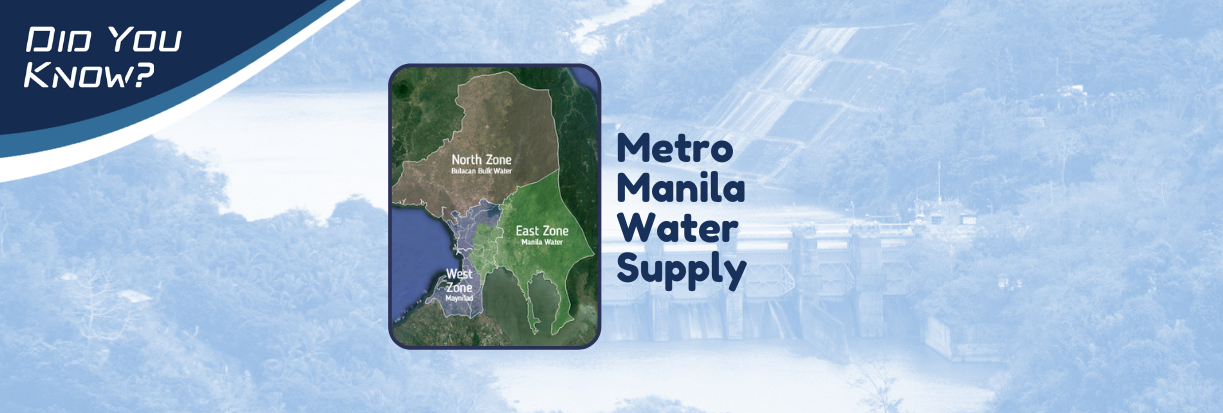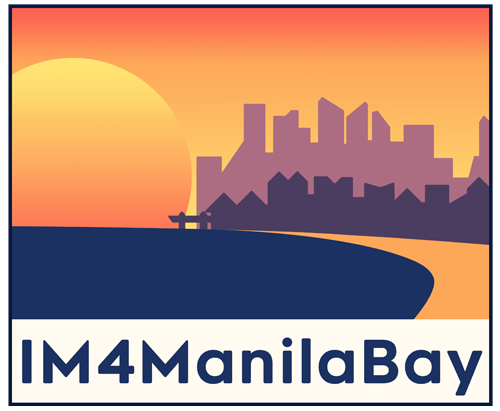The capacity of Metro Manila’s main raw water source is only designed to meet its projected water demand until 2019. This is based on the estimated current water supply capacity of 4,100 million liters per day (MLD) and medium domestic water demand projections at 150 liters per day per capita. To meet the increasing demand and avoid shortage of water supply, new water source projects are being explored, such as the Kaliwa Dam of the New Centennial Water Supply Project (600 MLD once completed), and the Sumag River Diversion Project (additional 188 MLD).



Metro Manila withdraws 97% of its raw water supply from another catchment: the Angat River Basin in Bulacan. The Angat Reservoir is supplied by waters from the Angat River and from Umiray River through the Umiray-Angat Transbasin Tunnel. From Angat Dam, the waters are conveyed to Ipo Dam, then to Bicti settling basins through three (3) tunnels. Adding demand to the already limited supply from Angat is the Bulacan Bulk Water Supply Project (BBWSP), which started its operations on January 2019. The BBWSP gets its allocation of 388 MLD to be served to various water districts in Bulacan, before the rest of the water goes to the Novaliches Portal. From the Novaliches Portal, 60% of the raw water or 2,400 MLD is diverted to La Mesa Treatment Plant and then to Maynilad service area in the West Zone. The other 40% or 1,600 MLD is allocated for the East Zone service area which is catered by Manila Water. A portion of this 40% goes to La Mesa Reservoir while the rest is diverted directly to the Manila Water treatment facilities through a bypass channel. Ideally, the total water supply allocation for Metro Manila and Rizal Province is 46 cms, or 4,000 MLD.
The service areas of the water concessionaires can be divided into three zones: the North, West, and East. The North Zone is catered to by the Bulakan Bulk Water, the West by Maynilad, and the East by Manila Water Company. About 93% of these areas are encompassed within the Manila Bay Watershed area, with the North and East Zones’ boundaries coinciding with the coasts of Bulacan, NCR, and Cavite.
For the north zone, stages 1 and 2 of the BBWSP services 13 water districts in Bulacan namely Balagtas, Bocaue, Marilao, Meycauayan, Obando, San Jose Del Monte, Bulacan, Calumpit, Guiginto, Malolos, Paombong, Plaridel, and Sta. Maria.
On the other hand, the West Zone is composed of Caloocan, Valenzuela, Parañaque, Malabon, Pasay, Muntinlupa, Navotas, Las Piñas, and some parts of Makati, Manila, Quezon City, and Cavite. Water goes first through the La Mesa Treatment and Putatan Water Treatment Plants before reaching the service areas.
Lastly for the East Zone, the Manila Water services Mandaluyong, Marikina, Pasig, Pateros, San Juan, Taguig, some parts of Makati, Manila, Quezon City, and 13 municipalities in Rizal. The Balara Treatment Plants, East La Mesa Treatment Plant, and Cardona Treatment Plant ensure the potability of water to be distributed to these areas.
With all these areas and the growing population that is being catered to, coupled with the currently limited supply that the Angat Reservoir can provide, it is essential to have other major sources of domestic water. Putting up new facilities should however take into consideration all the aspects in the construction or implementation, including environmental and socio-economic impacts of such projects.










 Room 235, National Hydraulic Research Center,
Room 235, National Hydraulic Research Center, esmart.im4manilabay@gmail.com
esmart.im4manilabay@gmail.com 

No responses yet